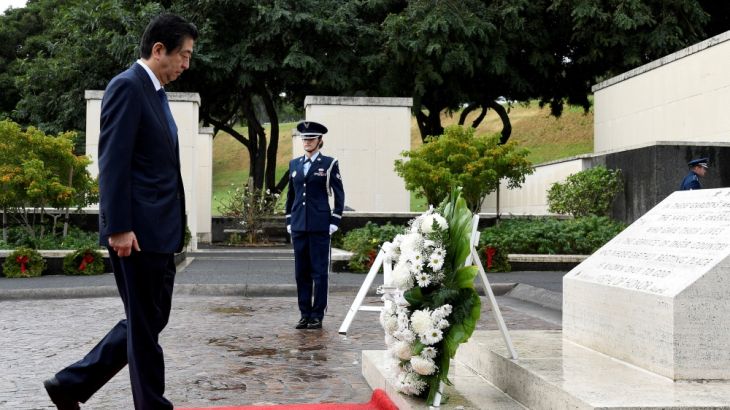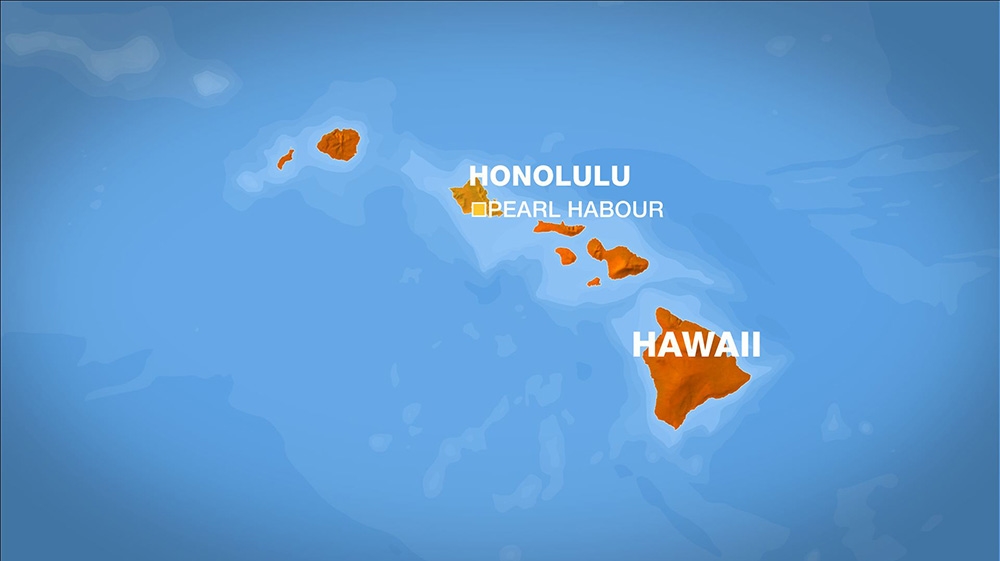Shinzo Abe visits Pearl Harbor with Barack Obama
Shinzo Abe’s visit to memorial in Hawaii is the first to include ceremonies and speeches together with the US president.

The leaders of Japan and the US have met at Pearl Harbor in Hawaii, 75 years after the surprise Japanese air attack that led to the US entering World War II.
The meeting on Tuesday between Shinzo Abe and Barack Obama at the historic site is a further step in the reconciliation process between the two wartime enemies.
The Japanese prime minister and US president have both sought to guide their citizens to embrace reconciliation and remembrance.
Although Abe’s visit is not the first by a Japanese leader to Pearl Harbor, it is the first to include ceremonies and speeches together with the US president.

For Obama, it is possibly the last time he has met a foreign leader as president, White House aides said.
“This visit, and the president’s visit to Hiroshima earlier this year, would not have been possible eight years ago,” said Daniel Kritenbrink, Obama’s top Asia adviser in the White House.
“That we are here today is the result of years of efforts at all levels of our government and societies, which has allowed us to jointly and directly deal with even the most sensitive aspects of our shared history.”
The meeting between the two leaders comes as Abe prepares to lead Japan into an uncertain era, with Republican Donald Trump set to occupy the White House in January.
![Pearl Harbour remains seared in American memory for dragging the US into World War II [EPA]](/wp-content/uploads/2016/12/e693f147e4ba43b085b942fc2b10e571_18.jpeg)
The president-elect has declared his opposition to the Trans-Pacific Partnership trade agreement that Obama was pushing for and that Abe made the heart of his economic strategy.
And, at least on the campaign trail, Trump has even called into question the US security guarantees that shielded Japan through the Cold War and later the rise of China.
In eight years, Obama, America’s Hawaiian-born first “Pacific president”, never made the headway he wanted in his vaunted “rebalance to Asia” diplomatic strategy. In May, he visited Hiroshima to pay his respects.
Theatre of war
The Japanese attack of January 7, 1941, on an unsuspecting US fleet moored at Pearl Harbor turned the Pacific into a major theatre of war.
The raid had been prepared in secret by Japan for months, but was over within two hours.
Japanese warplanes came out of nowhere to sink much of the US fleet and leave 2,400 sailors and soldiers dead.
A reluctant America was drawn into the war already raging in Europe and its colonies, a war that ended after US atom bombs razed the Japanese cities of Hiroshima and Nagasaki.
In May, Obama surveyed the preserved ruins in Hiroshima and revived his Nobel Peace Prize-winning call for a world without nuclear weapons.
|
|